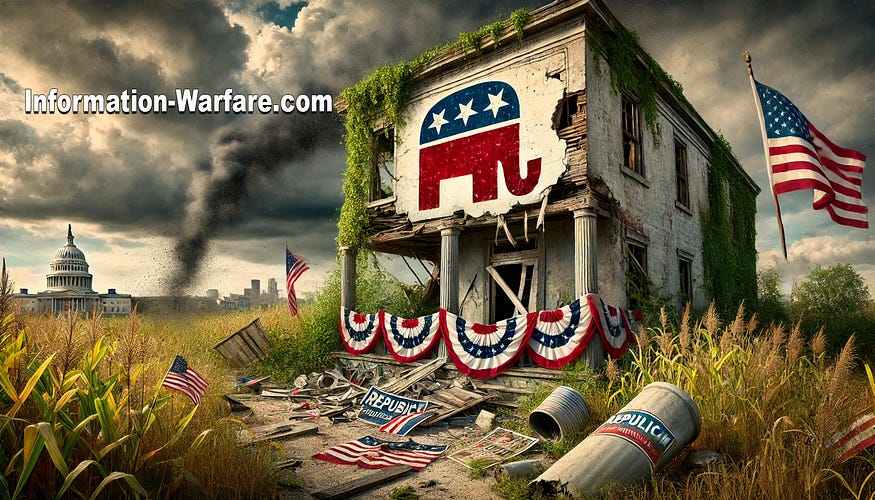The Republican Party is Over
The statement “The Republican Party is Over” can be interpreted and analyzed in various ways, encompassing political, social, and historical perspectives.

Here’s an exploration of the potential meaning and implications behind this assertion:
Political Realignment
Shifts in Political Ideologies:
Fragmentation: The Republican Party could experience fragmentation, with different factions forming splinter groups. For example, traditional conservatives might separate from the more populist or nationalist wings.
Emergence of New Parties: A significant shift could lead to the emergence of new political parties that better represent the evolving ideologies and priorities of former Republican voters.
Demographic Changes:
Changing Voter Base: The demographic composition of the United States is changing, with younger, more diverse populations becoming a larger portion of the electorate. These groups may not align with traditional Republican values, leading to a decline in the party’s influence.
Urbanization: As urban areas grow and become more politically significant, the predominantly rural base of the Republican Party may find itself increasingly outnumbered.
Internal Conflicts
Ideological Divides:
Moderates vs. Extremists: Internal conflicts between moderate Republicans and more extreme factions, such as the far-right or Trumpist wings, could weaken the party’s cohesion and effectiveness.
Policy Disagreements: Disagreements on key policies such as healthcare, immigration, and climate change could further divide the party, making it difficult to present a unified front.
Leadership Struggles:
Leadership Vacuums: The absence of strong, unifying leaders could leave the party directionless and fragmented.
Succession Issues: Disputes over leadership succession could lead to power struggles and weaken the party’s organizational structure.
Electoral Challenges
Losing Key Elections:
Presidential and Congressional Losses: Repeated losses in presidential and congressional elections could demoralize the party base and reduce its influence in national politics.
State-Level Decline: Losing control of state legislatures and governorships could further diminish the party’s ability to implement its agenda.
Voter Disillusionment:
Declining Membership: Disillusionment among traditional Republican voters, particularly if they feel the party no longer represents their values, could lead to a decline in party membership and support.
Independent Voters: An increase in voters identifying as independents rather than aligning with the Republican Party could signal a shift away from traditional two-party dominance.
Historical Context
Historical Precedents:
Whig Party Collapse: The Republican Party’s potential decline can be compared to the collapse of the Whig Party in the 1850s, which disintegrated due to internal divisions over slavery and other issues, paving the way for the emergence of the Republican Party.
Realignment Periods: The United States has experienced several periods of political realignment, where major parties have redefined themselves or new parties have emerged to replace old ones. The current period may be another such realignment.
Future Prospects
Rebranding and Reinvention:
Adapting to Change: The Republican Party could adapt to changing demographics and political landscapes by rebranding itself and broadening its appeal.
Policy Innovation: Developing innovative policies that address contemporary issues could help the party regain relevance and attract a broader base of support.
Potential for Revival:
Grassroots Movements: Grassroots movements within the party could rejuvenate its base and bring new energy and ideas.
Strategic Alliances: Forming strategic alliances with other political groups or movements could strengthen the party’s position.
Conclusion
The statement “The Republican Party is Over” reflects concerns about the party’s current trajectory and its ability to remain a dominant force in American politics. However, political landscapes are dynamic, and parties often evolve in response to new challenges and opportunities. While the Republican Party may face significant hurdles, its future will depend on its ability to adapt, unify, and address the changing needs and values of the American electorate.

